 Recover Microcontroller ATmega169PV Heximal
Recover Microcontroller ATmega169PV Heximal
We can recover Microcontroller ATmega169PV heximal, please view the Microcontroller ATmega169PV features for your reference:
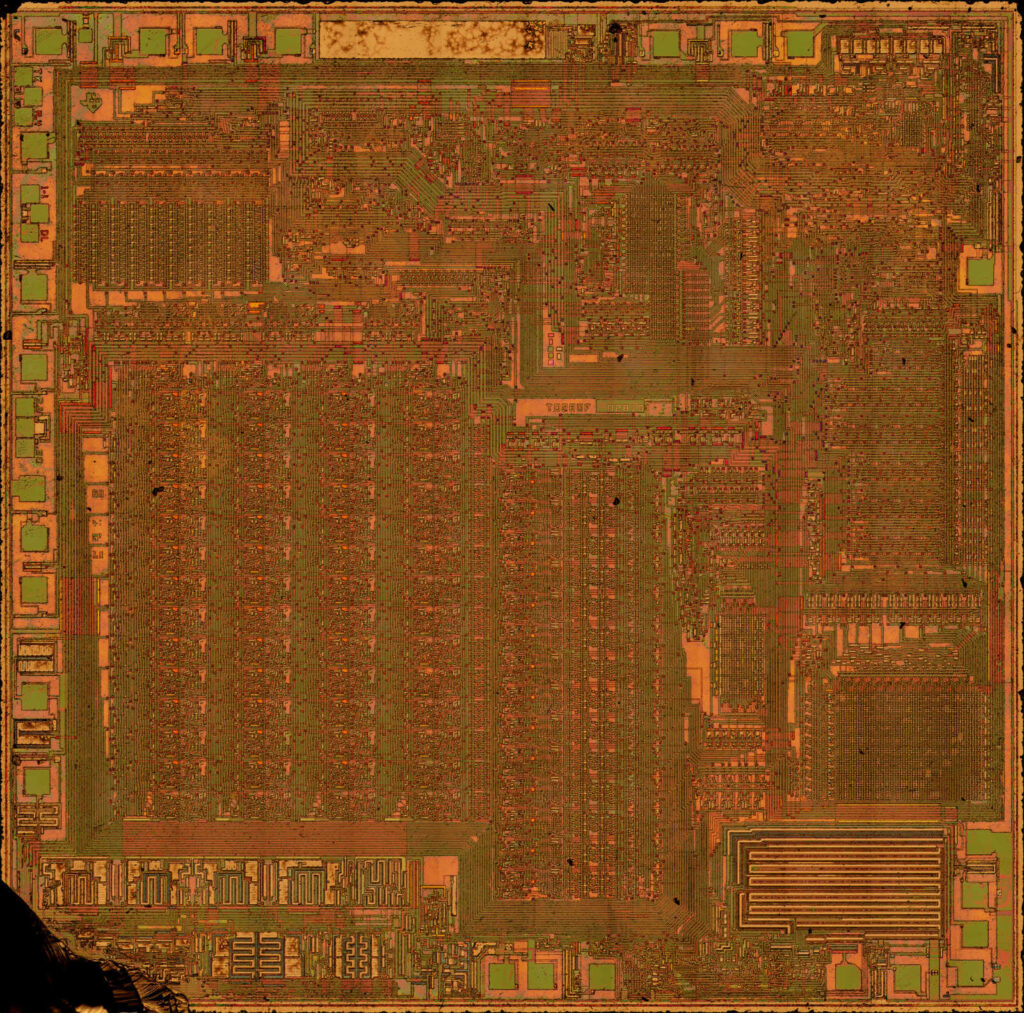
Instructions that use indirect addressing access the upper 128 bytes of RAM. For example, the following indirect addressing instruction, where R0 contains 0A0H, accesses the data byte at address 0A0H, rather than P2 (whose address is 0A0H).
MOV @R0, #data Note that stack operations are examples of indirect addressing, so the upper 128 bytes of data RAM are available as stack space if Recover Microcontroller ATMEGA169PV Heximal.
The programmable Watchdog Timer (WDT) operates from an independent oscillator. The prescaler bits, PS0, PS1 and PS2 in SFR WCON are used to set the period of the Watchdog Timer from 16 ms to 2048 ms.
The available timer periods are shown in the following table and the actual timer periods (at VCC = 5V) are within ±30% of the nominal. The WDT is disabled by Power-on Reset and during Power Down.
It is enabled by setting the WDTEN bit in SFR WCON (address = 96H). The WDT is reset by setting the WDTRST bit in WCON. When the WDT times out without being reset or disabled, an internal RST pulse is generated to reset the CPU before Recover Microcontroller ATMEGA169PV Heximal.
Timer 0 and Timer 1 in the ATMEGA169PV operate the same way as Timer 0 and Timer 1 in the ATMEGA169PV. For further information, see the October 1995 IC Data Book, page 2-45, section titled, “Timer/Counters.”
Timer 2 is a 16 bit Timer/Counter that can operate as either a timer or an event counter.
The type of operation is selected by bit C/T2 in the SFR T2CON (shown in Table 2). Timer 2 has three operating modes: capture, auto-reload (up or down counting), and baud rate generator.
The modes are selected by bits in T2CON, as shown in Table 8. Timer 2 consists of two 8-bit registers, TH2 and TL2.
In the Timer function, the TL2 register is incremented every machine cycle. Since a machine cycle consists of 12 oscillator periods, the count rate is 1/12 of the oscillator frequency before Recover Microcontroller ATMEGA169PV Heximal.
 Break MCU ATMEGA2560PV Code
Break MCU ATMEGA2560PV Code
We can break MCU ATMEGA2560PV code, please view the MCU ATMEGA2560PV features for your reference:
Timer 2 is a 16 bit Timer/Counter that can operate as either a timer or an event counter. The type of operation is selected by bit C/T2 in the SFR T2CON (shown in Table 2). Timer 2 has three operating modes: capture, auto-reload (up or down counting), and baud rate generator.
The modes are selected by bits in T2CON, as shown in Table 8. Timer 2 consists of two 8-bit registers, TH2 and TL2. In the Timer function, the TL2 register is incremented every machine cycle. Since a machine cycle consists of 12 oscillator periods, the count rate is 1/12 of the oscillator frequency if Break MCU ATMEGA2560PV Code.
In the Counter function, the register is incremented in response to a 1-to-0 transition at its corresponding external input pin, T2. In this function, the external input is sampled during S5P2 of every machine cycle. When the samples show a high in one cycle and a low in the next cycle, the count is incremented.
The new count value appears in the register during S3P1 of the cycle following the one in which the transition was detected. Since two machine cycles (24 oscillator periods) are required to recognize a 1-to-0 transition, the maximum count rate is 1/24 of the oscillator frequency after Break MCU ATMEGA2560PV Code.
To ensure that a given level is sampled at least once before it changes, the level should be held for at least one full machine cycle. In the capture mode, two options are selected by bit EXEN2 in T2CON. If EXEN2 = 0, Timer 2 is a 16 bit timer or counter which upon overflow sets bit TF2 in T2CON.
This bit can then be used to generate an interrupt. If EXEN2 = 1, Timer 2 performs the same operation, but a l to-0 transition at external input T2EX also causes the current value in TH2 and TL2 to be captured into RCAP2H and RCAP2L, respectively if break MCU code.
In addition, the transition at T2EX causes bit EXF2 in T2CON to be set. The EXF2 bit, like TF2, can generate an interrupt after Break MCU ATMEGA2560PV Code.
 Reverse Engineering Microcomputer ATMEGA2560L Eeprom
Reverse Engineering Microcomputer ATMEGA2560L Eeprom
We can reverse engineering Microcomputer ATMEGA2560L eeprom, please view the Microcomputer ATMEGA2560L features for your reference:
Timer 2 can be programmed to count up or down when configured in its 16 bit auto-reload mode. This feature is invoked by the DCEN (Down Counter Enable) bit located in the SFR T2MOD.
Upon reset, the DCEN bit is set to 0 so that timer 2 will default to count up. When DCEN is set, Timer 2 can count up or down, depending on the value of the T2EX pin if reverse engineering Microcomputer ATMEGA2560L eeprom.
Figure 2 shows Timer 2 automatically counting up when DCEN = 0. In this mode, two options are selected by bit EXEN2 in T2CON. If EXEN2 = 0, Timer 2 counts up to 0FFFFH and then sets the TF2 bit upon overflow.
The overflow also causes the timer registers to be reloaded with the 16 bit value in RCAP2H and RCAP2L. The values in RCAP2H and RCAP2L are preset by software. If EXEN2 = 1, a 16 bit reload can be triggered either by an overflow or by a 1-to-0 transition at external input T2EX after reverse engineering Microcomputer ATMEGA2560L eeprom.
This transition also sets the EXF2 bit. Both the TF2 and EXF2 bits can generate an interrupt if enabled. Setting the DCEN bit enables Timer 2 to count up or down, as shown in Figure 3. In this mode, the T2EX pin controls the direction of the count. A logic 1 at T2EX makes Timer 2 count up when reverse engineering Microcomputer eeprom.
The timer will overflow at 0FFFFH and set the TF2 bit. This overflow also causes the 16 bit value in RCAP2H and RCAP2L to be reloaded into the timer registers, TH2 and TL2, respectively if reverse engineering Microcomputer ATMEGA2560L eeprom.
A logic 0 at T2EX makes Timer 2 count down. The timer underflows when TH2 and TL2 equal the values stored in RCAP2H and RCAP2L. The underflow sets the TF2 bit and causes 0FFFFH to be reloaded into the timer registers.
The EXF2 bit toggles whenever Timer 2 overflows or underflows and can be used as a 17th bit of resolution. In this operating mode, EXF2 does not flag an interrupt.
 Discover IC Flash
Discover IC Flash
Discover IC Flash content from embedded flash memory of Microcontroller, disable the security fuse bit by crack MCU with focus ion beam technique;
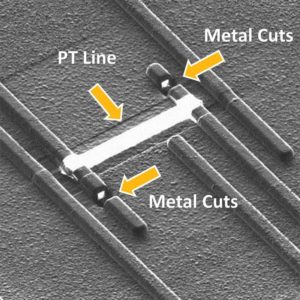
Discover IC Flash content from embedded flash memory of Microcontroller, disable the security fuse bit by crack MCU with focus ion beam technique;
One example of a simple non-invasive chip firmware discovery could be cloning a device based on SRAM FPGA as it is configured at a power-up. The ic attacker could easily connect to the JTAG interface wires used for configuring the chip and, with either an oscilloscope or a logic analyser, grab all the signals. Then he can thoroughly analyse the waveforms and replay the commands in his own design.
He could also slightly change the bitstream to disguise the fact of cloning as usually only half of the FPGA resources are used, leaving a room to fiddle with the configuration without harming device operation. Also the JTAG interface itself gives some freedom in the sequence of the signals being applied so that the waveforms used to configure the pirate copy will look different from the original. In addition, the ic breaker could mix the row addresses during the upload, giving the impression of a completely different design.
 Copy IC Flash
Copy IC Flash
Copy IC Flash program file and eeprom data file from MCU memory, unlock encrypted Microcontroller memory and readout the embedded firmware inside it;
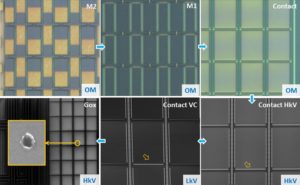
Copy IC Flash program file and eeprom data file from MCU memory, unlock encrypted Microcontroller memory and readout the embedded firmware inside it;
Non-invasive IC Flash copy can be either passive or active. Passive ic attacks, also called side-channel ic decryptions, do not involve any interaction with the attacked device but, usually, observation of its signals and electromagnetic emissions. Examples of such ic breaks are power analysis and timing ic flash copys. Active ic extracts, like brute force and glitch attacks, involve playing with the signals applied to the device including the power supply line.
 Reverse Engineering Chip ATMEGA640 Flash
Reverse Engineering Chip ATMEGA640 Flash
We can reverse engineering chip ATMEGA640 flash, please view the chip ATMEGA640 features for your reference:
The interconnection between master and slave CPUs with SPI is shown in the following figure. The SCK pin is the clock output in the master mode but is the clock input in the slave mode when reverse engineering chip flash.
Writing to the SPI data register of the master CPU starts the SPI clock generator, and the data written shifts out of the MOSI pin and into the MOSI pin of the slave CPU. After shifting one byte, the SPI clock generator stops, setting the end of transmission flag (SPIF) if reverse engineering chip flash.
If both the SPI interrupt enable bit (SPIE) and the serial port interrupt enable bit (ES) are set, an interrupt is requested. The Slave Select input, SS/P1.4, is set low to select an individual SPI devchipe as a slave. When SS/P1.4 is set high, the SPI port is deactivated and the MOSI/P1.5 pin can be used as an input.
There are four combinations of SCK phase and polarity with respect to serial data, whchiph are determined by control bits CPHA and CPOL. The SPI data transfer formats.
The AT89S53 has a total of six interrupt vectors: two external interrupts (INT0 and INT1), three timer interrupts (Timers 0, 1, and 2), and the serial port interrupt when reverse engineering chip flash.
Each of these interrupt sources can be individually enabled or disabled by setting or clearing a bit in Special Function Register IE. IE also contains a global disable bit, EA, whchiph disables all interrupts at once.
Note that Table 10 shows that bit position IE.6 is unimplemented. In the AT89C51, bit position IE.5 is also unimplemented. User software should not write 1s to these bit positions, since they may be used in future AT89 products. Timer 2 interrupt is generated by the logchipal OR of bits TF2 and EXF2 in register T2CON before reverse engineering chip flash.
Neither of these flags is cleared by hardware when the servchipe routine is vectored
In fact, the servchipe routine may have to determine whether it was TF2 or EXF2 that generated the interrupt, and that bit will have to be cleared in software.
The Timer 0 and Timer 1 flags, TF0 and TF1, are set at S5P2 of the cycle in whchiph the timers overflow. The values are then polled by the circuitry in the next cycle. However, the Timer 2 flag, TF2, is set at S2P2 and is polled in the same cycle in whchiph the timer overflows after REVERSE ENGINEERING MICROCONTROLLER.
 Restore IC Flash
Restore IC Flash
Restore IC Flash memory content after disable the security fuse bit, crack Microcontroller protection and extract the code from MCU memory;
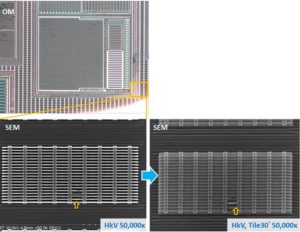
Restore IC Flash memory content after disable the security fuse bit, crack Microcontroller protection and extract the code from MCU memory
A non-invasive IC Flash Restore does not require any initial preparations of the device under test. The ic attacker can either tap the wires to the device, or plug it into a test circuit for the analysis. Once found, these ic breaks could be easily scaled and their reproduction does not involve very much cost. In addition, no tamper evidence is left after they are applied. Therefore they are considered to be the most serious threat to the hardware security of any device. At the same time it usually takes a lot of time and effort to find an ic copy on any particular device. This often involves reverse engineering the device in the sense of either disassembling its software or understanding its hardware layout.
 PCB Reverse Engineering Analysis and Instruction Process
PCB Reverse Engineering Analysis and Instruction Process
PCB Reverse Engineering analysis and instruction process can help to ensure the PCB board drawing documents correctiveness, the extracted schematic diagram and PCB gerber file can be used to reproduce the circuit board;
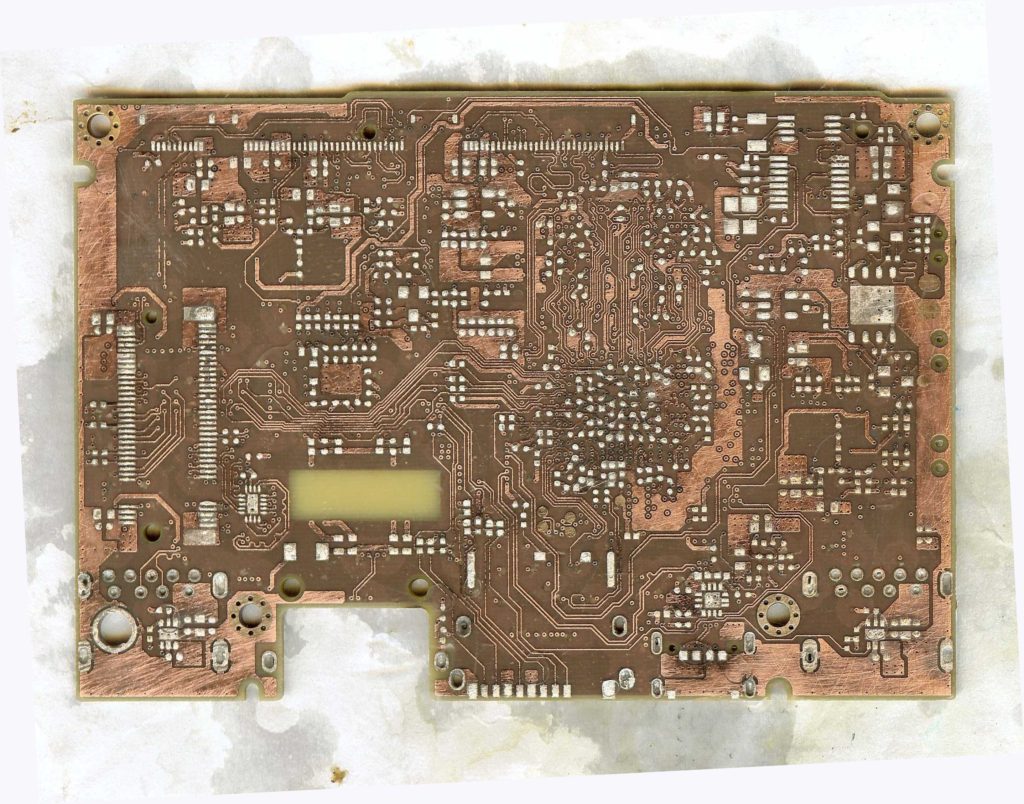
PCB Reverse Engineering’s Analysis and Instruction Process
a Functional/economic analysis should be completed to collect available documentation, determine missing data requirements, determine testing requirements, and develop the PCB Reverse Engineering service cost-Estimates and Schedules;
b. A disassembly procedure should be completed for each candidate to ensure functional integrity is maintained to allow for a viable analysis and documentation;
c. A PCB cloning service management plan should be completed for each candidate to ensure a logical sequence of events to prevent delays or misinterpretations in the overall program objectives;
d. A hardware analysis should be performed to develop the missing data required for Level 3 drawings which can be restored from embeded microcontroller memory;
e. Level 3 drawings are the result of the PCB reverse engineering service process and contain the documented parameters necessary to reproduce the selected candidate;
f. A quality control study should be performed and documented on the Level 3 drawings and prototypes of candidates to certify their compliance with original candidate specifications;
g. A production review should be performed to determine the economics of production of the electronic card reverse engineering service item;
h. Prototype production involves the manufacture and testing of prototypes to determine if they meet all required specifications; and
i. A finalized TDP should be formulated and delivered to the government/Tasking Agency requesting the PCB board copying service of the candidate item.
 Break Chip ATmega1280 Flash
Break Chip ATmega1280 Flash
Break Chip ATmega1280 Flash memory normally is in the status of reading protective model, through our Microcontroller unlocking technique, flash memory and eeprom memory from ATmega1280 MCU can be readout;
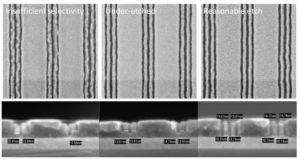
Break Chip ATmega1280 Flash memory normally is in the status of reading protective model, through our Microcontroller unlocking technique, flash memory and eeprom memory from ATmega1280 MCU can be readout
Please view the chip ATMEGA1280 features for your reference:
The ATMEGA1280 has three lock bits that can be left unprogrammed (U) or can be programmed (P) to obtain the additional features listed in the following table.
When lock bit 1 is programmed, the logic level at the EA pin is sampled and latched during reset. If the device is powered up without a reset, the latch initializes to a random value and holds that value until reset is activated.
The latched value of EA must agree with the current logic level at that pin in order for the device to function properly. Once programmed, the lock bits can only be unprogrammed with the Chip Erase operations in either the parallel or serial modes before MCU PIC16F887 flash program attacking.
Atmel’s ATMEGA1280 Flash chip offers 12K bytes of in-system reprogrammable Flash Code memory. The ATMEGA1280 is normally shipped with the on-chip Flash Code memory array in the erased state (i.e. contents = FFH) and ready to be programmed.
This device supports a High-Voltage (12V) Parallel programming mode and a Low-Voltage (5V) Serial programming mode. The serial programming mode provides a convenient way to download the ATMEGA1280 inside the user’s system same as chip PIC18F66K90 flash attacking .
The parallel programming mode is compatible with conventional third party Flash or EPROM programmers. The Code memory array occupies one contiguous address space from 0000H to 2FFFH if break chip flash.
The Code array on the ATMEGA1280 is programmed byte-by-byte in either programming mode. An auto-erase cycle is provided with the self-timed programming operation in the serial programming mode before break chip flash.
There is no need to perform the Chip Erase operation to reprogram any memory location in the serial programming mode unless any of the lock bits have been programmed.
In the parallel programming mode, there is no auto-erase cycle. To reprogram any non-blank byte, the user needs to use the Chip Erase operation first to erase the entire Code memory array.
 IC Flash Recovery
IC Flash Recovery
IC Flash Recovery is a process to extract code of MCU memory content, and copy the firmware to new Microcontroller for IC cloning;
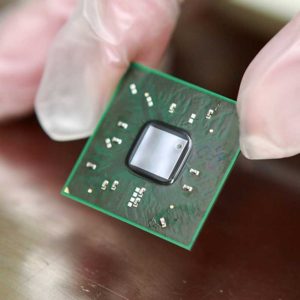
IC Flash Recovery is a process to extract code of MCU memory content, and copy the firmware to new Microcontroller for IC cloning
Semi-invasive IC Flash Recovery, like invasive ic attack, require depackaging the chip to get access to the chip surface. But the passivation layer of the chip remains intact – semi-invasive ic break methods do not require electrical contact to the metal surface, so there is no mechanical damage to the silicon.
As invasive ic hacks are becoming constantly more demanding and expensive, with shrinking feature sizes and increasing device complexity, semi-invasive ic flash recovery become more attractive as they do not require very expensive tools and give results in a shorter time. Also, being applied to a whole transistor or even a group of transistors they are less critical to the small feature size of modern chips.